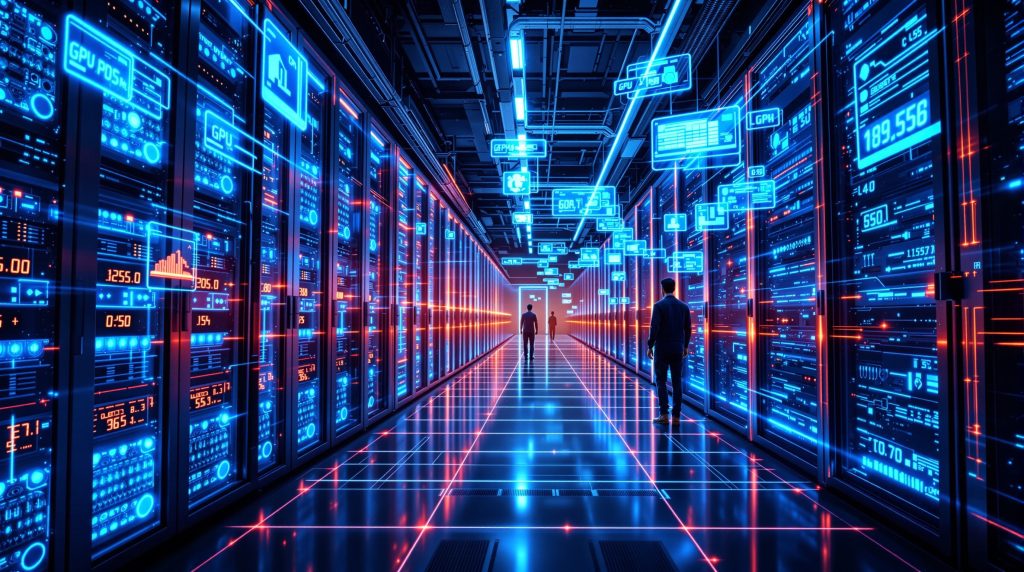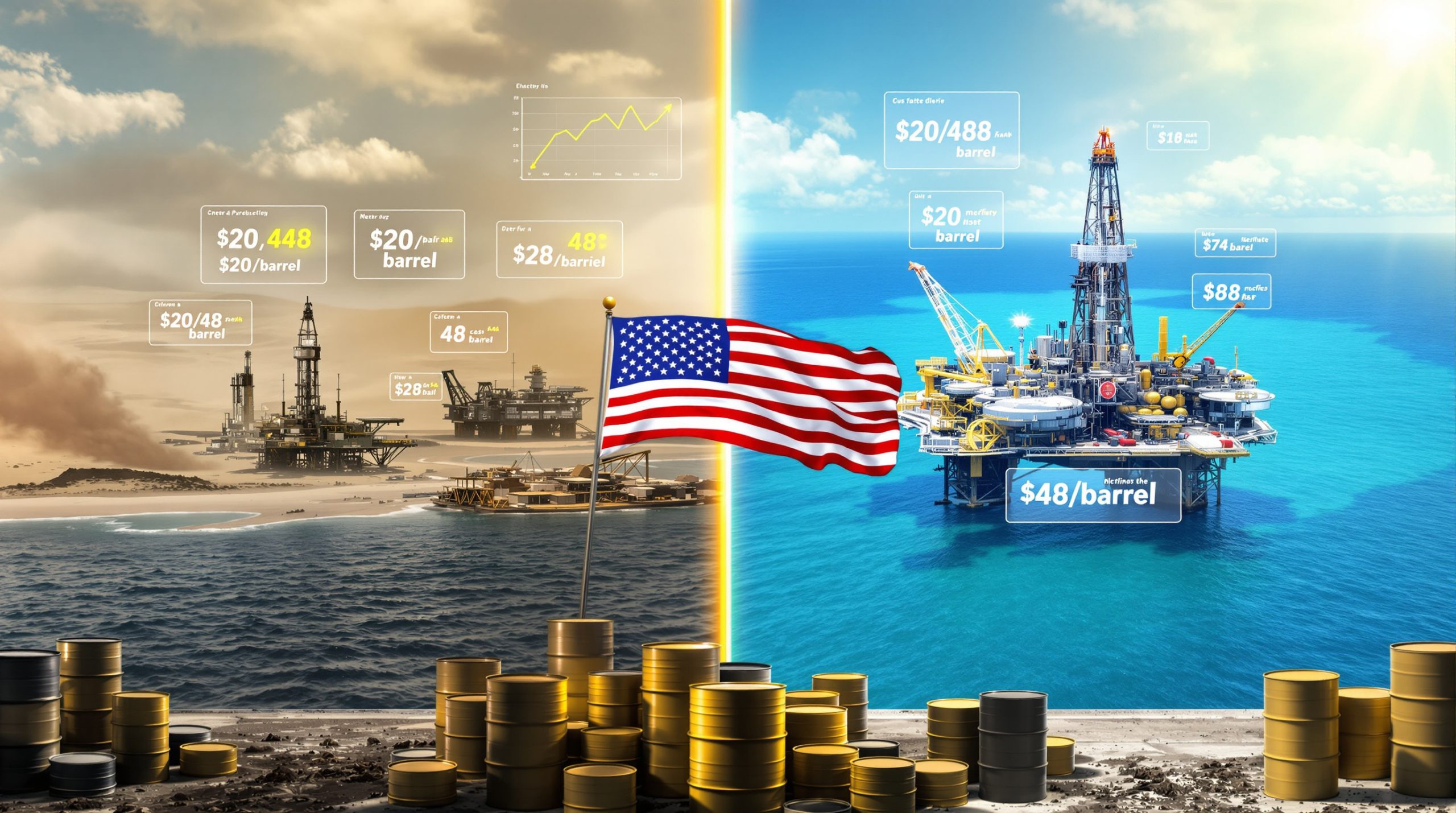Understanding the AI Data Center Buildout: Infrastructure Powering the AI Revolution
The artificial intelligence revolution has fundamentally altered the landscape of data center infrastructure. Traditional facilities designed for general computing workloads are proving inadequate for the intensive demands of AI applications. This transformation represents one of the largest infrastructure buildouts in modern history, with hyperscalers and tech companies racing to establish specialized facilities that can handle the extraordinary computational requirements of large language models and other AI workloads.
The contrast between traditional and AI-optimized data centers is striking:
| Feature | Traditional Data Center | AI Data Center |
|---|---|---|
| Power Density | 10-15 kW per rack | 50-150+ kW per rack |
| Cooling System | Primarily air cooling | Liquid/immersion cooling |
| Processor Focus | CPU-centric | GPU/TPU-intensive |
| Network Speed | 10-40 Gbps | 100+ Gbps |
| Storage Type | Mixed HDD/SSD | High-speed NVMe/SSD |
| Facility Size | Varies widely | Trending toward mega-scale |
This shift represents not just a technical evolution but a fundamental reimagining of digital infrastructure to support the AI-driven future.
What Makes AI Computing Needs Unique?
Unprecedented Power Requirements
AI data centers stand apart primarily due to their extraordinary power demands. While traditional enterprise data centers typically operate at 5-15 kilowatts per rack, AI-focused facilities commonly require 40-100 kilowatts per rack or higher. This 5-10x increase in power density creates cascading challenges throughout the facility design.
The scale of these power requirements is staggering. Major hyperscalers are planning AI campuses that will consume hundreds of megawatts to multiple gigawatts of electricity—comparable to small cities. This represents a fundamental shift in how data centers are planned, built, and operated.
The power requirements for major AI data centers can exceed 2 gigawatts—equivalent to the electricity needs of approximately 1.5 million homes.
Specialized Computing Hardware
AI workloads demand specialized processing capabilities that differ dramatically from general-purpose computing:
-
GPU Dominance: Graphics Processing Units have become the backbone of AI computing due to their ability to perform thousands of calculations simultaneously. NVIDIA's H100 and A100 GPUs currently dominate this space, with each unit costing $25,000-40,000.
-
Tensor Processing Units: Google's custom-designed TPUs offer an alternative specialized for machine learning workloads.
-
Emerging AI Accelerators: Companies like AMD, Intel, and various startups are developing specialized chips designed specifically for AI training and inference.
This specialized hardware creates unique facility requirements, from power delivery to cooling solutions that can handle the intense heat generated by these components.
Advanced Cooling Technologies
The extreme heat generation from densely packed GPU clusters has driven innovation in cooling technologies:
-
Direct Liquid Cooling: Circulating coolant directly to hot components can be 30-40% more efficient than traditional air cooling.
-
Immersion Cooling: Submerging entire servers in dielectric fluid provides excellent heat transfer properties for the most demanding applications.
-
Rear Door Heat Exchangers: These systems capture and remove heat at the rack level before it enters the data hall.
The adoption of these advanced cooling systems represents a significant shift from traditional air-cooled environments and requires specialized expertise to implement effectively.
How Are Hyperscalers Approaching the AI Infrastructure Challenge?
Massive Investment Commitments
The scale of investment in AI infrastructure is unprecedented. Major technology companies are committing hundreds of billions of dollars to build out specialized AI computing capacity:
-
Microsoft: Planning to invest over $50 billion in AI infrastructure, with significant focus on supporting OpenAI's computing needs.
-
Google: Committed to spending tens of billions on AI data centers, including custom TPU deployments.
-
Amazon/AWS: Expanding its GPU clusters and specialized AI instances across its global infrastructure.
-
Meta: Building dedicated AI research clusters and expanding infrastructure to support AI features across its platforms.
These investments are creating a new tier of mega-scale computing facilities specifically optimized for AI workloads.
Strategic Location Selection
The extraordinary power requirements of AI data centers have made location selection increasingly strategic:
-
Power Grid Access: Proximity to robust electrical infrastructure has become the primary consideration, often outweighing traditional factors like network connectivity.
-
Renewable Energy Integration: Many AI operators are seeking locations with access to renewable energy to address sustainability concerns and stabilize long-term energy costs.
-
Water Availability: Advanced cooling systems often require significant water resources, making water availability a critical factor.
-
Regulatory Environment: Regions with supportive policies for large-scale industrial development and energy use are increasingly favored.
This has led to concentration in areas with strong power infrastructure and supportive regulatory environments, creating new "AI hubs" distinct from traditional data center markets.
Custom Hardware Development
Leading technology companies are increasingly developing proprietary AI hardware to gain competitive advantages:
-
Custom Silicon: Several hyperscalers are designing their own AI chips to optimize for their specific workloads.
-
Specialized Networking: Ultra-high-bandwidth networking fabrics are being developed to connect thousands of processors efficiently.
-
Integrated Systems: Purpose-built systems that optimize every component for AI workloads are replacing general-purpose infrastructure.
This vertical integration approach allows companies to optimize the entire stack for AI performance while potentially reducing long-term costs.
What Are the Key Challenges in AI Data Center Buildout?
Energy Supply Constraints
The extraordinary power requirements of AI data centers are creating unprecedented challenges for energy infrastructure:
-
Grid Capacity Limitations: Many regions lack sufficient electrical capacity to support multiple large-scale AI facilities.
-
Transmission Constraints: Even when generation capacity exists, inadequate transmission infrastructure can limit power delivery.
-
Utility Readiness: Power companies often require years to upgrade infrastructure to support gigawatt-scale facilities.
These constraints are creating a race for suitable locations and pushing development timelines far beyond traditional data center projects. Additionally, many organizations are seeking energy transition insights to navigate these challenges effectively.
Supply Chain Bottlenecks
Critical components for AI infrastructure face significant supply constraints:
-
GPU Availability: High-end GPUs from NVIDIA face multi-month lead times due to overwhelming demand.
-
Power Distribution Equipment: Transformers, switchgear, and other electrical components have extended lead times of 18-24+ months, according to the U.S. Energy Information Administration's latest reports.
-
Specialized Cooling Systems: Components for advanced cooling solutions face similar constraints.
These supply chain challenges are extending project timelines and forcing companies to secure components far in advance of construction. Recent copper market insights reveal how critical material shortages are affecting the AI data center buildout timeline.
Sustainability Concerns
The environmental impact of AI infrastructure has become a major concern:
-
Carbon Footprint: The massive energy consumption of AI systems raises questions about their climate impact.
-
Water Usage: Advanced cooling systems can require significant water resources in some implementations.
-
Resource Consumption: The rapid expansion of AI infrastructure is driving demand for raw materials from copper to rare earth elements.
Leading companies are increasingly focused on developing more sustainable approaches, from renewable energy integration to more efficient system designs. However, energy transition challenges continue to complicate the path toward environmentally sustainable AI infrastructure.
Technical Workforce Limitations
The specialized nature of AI infrastructure has created a shortage of qualified personnel:
-
AI-Specific Expertise: The intersection of traditional data center skills with AI-specific knowledge is particularly scarce.
-
Construction Capacity: The sheer scale of projects is straining the availability of specialized construction teams.
-
Operational Talent: Running these complex facilities requires new skill sets that are in high demand.
This talent shortage is creating competition for key personnel and driving innovation in automation and operational efficiency.
How Is the AI Buildout Affecting Global Markets?
Commodity and Resource Impacts
The massive scale of AI infrastructure development is creating significant ripple effects across resource markets:
-
Metals and Minerals: Demand for copper, aluminum, steel, and rare earth elements has surged to support the buildout. According to the International Copper Association, AI data centers alone will drive an additional 1.7 million tonnes of copper demand annually by 2030.
-
Energy Markets: Significant new electricity demand is affecting power markets and driving renewable energy development. The U.S. Energy Information Administration projects data centers will account for 8% of total U.S. electricity consumption by 2030, up from 4% in 2023.
-
Construction Materials: Large-scale projects are consuming concrete, steel, and other building materials at unprecedented rates.
These demand shifts are contributing to price pressures and supply chain challenges across multiple industries. Recent analysis of commodity price impacts shows how the AI data center buildout is reshaping global resource markets.
Regional Economic Development
AI infrastructure investments are becoming major economic drivers in selected regions:
-
Job Creation: Each major AI data center can create thousands of construction jobs and hundreds of permanent positions.
-
Tax Revenue: These facilities generate significant property and other tax revenues for host communities.
-
Economic Clustering: Supporting industries and services often develop around major AI hubs.
This has led to intense competition among regions to attract these investments through incentives and supportive policies.
Competitive Landscape Shifts
Access to AI computing capacity is becoming a strategic advantage:
-
Compute as Competitive Edge: Companies with superior AI infrastructure can develop and deploy more advanced models.
-
Infrastructure Alliances: Strategic partnerships are forming to share the costs and benefits of AI infrastructure.
-
Regional AI Capabilities: Nations are increasingly viewing AI infrastructure as critical to economic competitiveness.
This is creating new competitive dynamics across industries and geopolitical considerations around AI capabilities.
What Does the Future of AI Data Centers Look Like?
Evolution Toward Efficiency
As the AI sector matures, focus is shifting toward efficiency improvements:
-
Model Optimization: Techniques to reduce the computational requirements of AI models without sacrificing capabilities.
-
Hardware Efficiency: New chip designs that deliver more AI performance per watt of electricity.
-
System-Level Optimization: Holistic approaches that improve efficiency across the entire infrastructure stack.
These advances may help moderate the extraordinary growth in energy requirements over time. According to McKinsey's research on compute costs, efficiency improvements could reduce the projected $7 trillion investment needed for AI infrastructure.
Distributed AI Infrastructure
The centralized mega-data center model may evolve toward more distributed approaches:
-
Edge AI Processing: Moving certain AI workloads closer to users to reduce latency and bandwidth requirements. Industry analysts project 50% of AI inference workloads will be processed at the edge by 2028.
-
Regional AI Hubs: Distributed networks of medium-sized facilities may complement the largest installations.
-
Hybrid Architectures: Combinations of centralized training with distributed inference capabilities.
This evolution could create more resilient and adaptable AI infrastructure ecosystems.
Integration with Energy Systems
AI data centers are likely to become more deeply integrated with energy infrastructure:
-
Grid Services: Using flexible AI workloads to provide stability services to electrical grids.
-
On-Site Generation: Direct integration of renewable energy generation with data centers.
-
Energy Storage: Incorporating battery or other storage technologies to optimize energy use.
These approaches could transform AI facilities from pure consumers to active participants in energy systems. The battery metals outlook suggests that energy storage integration with data centers will drive significant demand for lithium, nickel, and cobalt.
What Are the Investment Implications of the AI Data Center Buildout?
Direct Infrastructure Opportunities
The massive scale of AI infrastructure development is creating investment opportunities across multiple sectors:
-
Data Center REITs: Companies that own and operate specialized AI-ready facilities.
-
Construction and Engineering: Firms with expertise in building these complex facilities.
-
Power Infrastructure: Companies developing the electrical infrastructure to support AI facilities.
These sectors are seeing significant growth driven by the AI infrastructure expansion.
Supply Chain Beneficiaries
Companies throughout the AI infrastructure supply chain are experiencing strong demand:
-
Semiconductor Manufacturers: Producers of specialized AI chips and supporting components.
-
Cooling Technology Providers: Companies developing advanced cooling solutions for high-density computing.
-
Power Distribution Equipment: Manufacturers of transformers, switchgear, and other electrical components.
The extended nature of these supply chains creates diverse investment opportunities beyond the most visible technology companies.
Energy Sector Impacts
The extraordinary power requirements are creating new opportunities in the energy sector:
-
Renewable Energy Developers: Companies building new generation capacity to support AI facilities.
-
Transmission Infrastructure: Firms developing the grid connections needed for large-scale facilities.
-
Energy Efficiency Solutions: Technologies that can reduce the energy footprint of AI operations.
These opportunities reflect the deep interconnection between AI infrastructure and energy systems. Experts at Data Center Knowledge warn that the rapid buildout could lead to oversupply in some markets.
Conclusion: The Transformative Scale of AI Infrastructure
The AI data center buildout represents one of the most significant infrastructure developments of our time. Its scale, complexity, and far-reaching implications are reshaping not just the technology landscape but also energy systems, resource markets, and regional economies.
As this buildout continues, we can expect continued evolution in technology approaches, business models, and market structures. The companies and regions that successfully navigate these changes will be well-positioned to capture the benefits of the AI revolution.
The extraordinary demands of AI computing are driving innovation across multiple domains—from chip design to power systems to cooling technologies. This innovation cycle is likely to continue as the industry seeks more efficient, sustainable, and scalable approaches to supporting the growing demands of artificial intelligence.
Disclaimer: The information provided in this article is for educational purposes only and should not be considered as investment advice. Projections about future market developments, technology advancements, or resource demands represent opinions based on current information and are subject to change as circumstances evolve.
Want to Invest in the Next Major Mineral Discovery?
Stay ahead of the market with Discovery Alert's proprietary Discovery IQ model, which instantly identifies significant ASX mineral discoveries and transforms complex data into actionable investment insights. Discover why historic mineral finds have generated substantial returns by visiting Discovery Alert's dedicated discoveries page and begin your 30-day free trial today.




